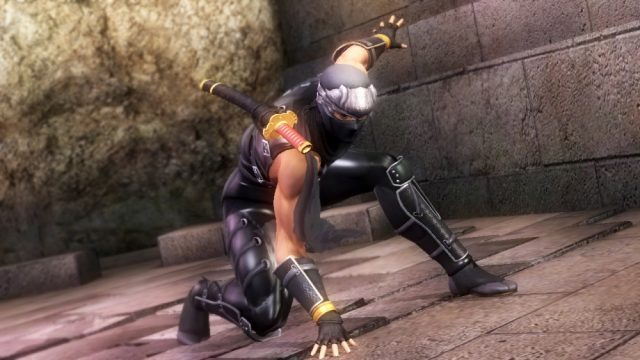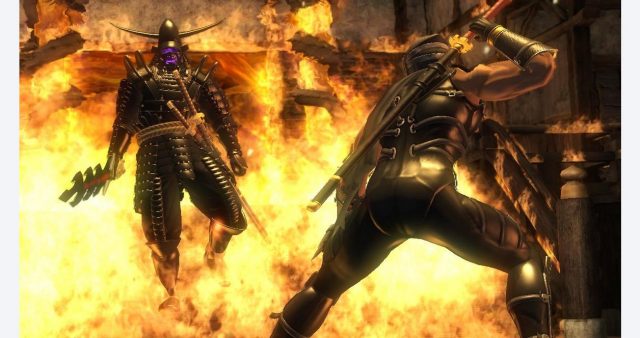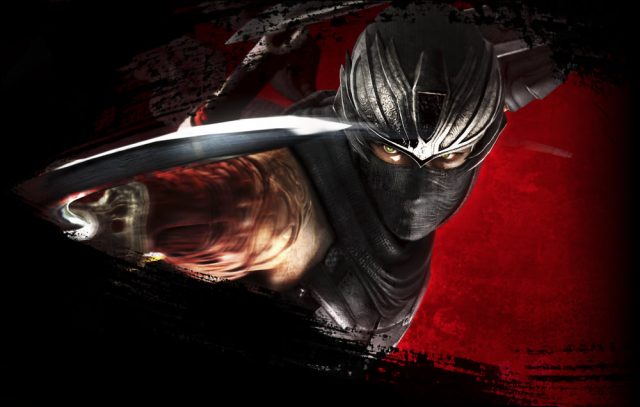Three incredible action games all in one package; combat is visceral and thrilling; the games expect players to invest in learning how to fight, not just react, resulting in immense satisfaction after mastering the controls; Ryu is one of the coolest leads ever
Difficulty might push away less skilled players or those not interested in being challenged; some performance woes when undocked, and even when docked not everything runs perfectly
Welcome to our latest Backlog Review, where we look at game releases that might have slipped through the cracks and determine whether or not they’re worthy of a playthrough.
For gamer’s of a certain age, Ryu Hayabusa is either one of the baddest warriors in all of video games or just some random ninja. While the series made its debut back in 1989 on NES in the nominal Ninja Gaiden, following a handful of sequels and rereleases across multiple consoles it would go dormant for a number of years. When Ninja Gaiden finally returned, it was under the guiding vision of designer Tomonobu Itagaki, who brought the title to Microsoft’s Xbox in 2004 as a blood-soaked reimagining aimed at a Western audience. After two more sequels and a range of ports across different platforms, Ryu has once more receded into the shadows. Thankfully, Tecmo has seen fit to bring the entire modern trilogy to Nintendo Switch in the form of Ninja Gaiden: Master Collection. Know that after playing it, what makes Ryu so special will be readily apparent.
As far as compilations go, Master Collection offers quite a lot for players to sink their teeth into. Ninja Gaiden Sigma, Ninja Gaiden Sigma 2, and Ninja Gaiden 3: Razor’s Edge are all present and each represents the definitive version of that respective game. Each game is an individual install on Switch, which is handy for anyone with storage limitations. Pick whichever (or all) of the titles to load up and get playing.
All three modern Ninja Gaiden games represent some of the best third-person melee combat produced in the past 20 years. Team Ninja strove to build these games around precision and strategy, not unlike the NES trilogy of Ninja Gaiden games. While it’s possible to lower the difficulty to accommodate less-skilled and newer players, Ninja Gaiden is meant to be difficult, is meant to provide a steep challenge. Enemies can’t be rushed or approached without caution—doing so will lead to some major beatdowns and quick deaths (believe me, I learned firsthand).
It’s in this regard that Ninja Gaiden can be polarizing. For some, the instinct to mindlessly hack and slash through foes will be highly tempting, but Ninja Gaiden isn’t interested in providing such easy thrills. To get to the point of being able to guide Ryu through opponents with relative ease takes a lot of practice and patience. Without resorting to playing on easy, some might be put off by Ninja Gaiden’s demand of excellence. Indeed, accessibility is likely to creep up in discussion of Ninja Gaiden, and while I can appreciate the mindset of wanting games to be for everyone (or at least as many people as reasonably possible), I also adhere to the notion that games are art and should thus never be limited. Team Ninja made these games to push players to excel at its combat in order to proceed. Ninja Gaiden demands to be met on its terms and I respect that.
Time has been kind to all three Ninja Gaiden games. The original, represented here as Sigma, has an interesting past. The first version of it launched as Ninja Gaiden on Xbox, was then reworked as Ninja Gaiden Black, and then was reworked once more for PlayStation 3 as Ninja Gaiden Sigma. Some swear by Black, but I’ve personally only ever played Sigma and love it. I feel confident in stating that either version is solid, so don’t feel like you’re missing out on anything if Master Collection is your first time playing any iteration of Ninja Gaiden. Of the three games here, this first installment focuses the most on implementing extremely thoughtful combat. Victory will only be obtained after learning to master parrying, dodging, and memorizing enemy attack patterns. It’s tough but hugely satisfying, and a big part of the reason why so many hold this first Ninja Gaiden in such high esteem.
Ninja Gaiden Sigma 2, meanwhile, veers into a slightly different direction. The violence is ratcheted up a notch compared to Sigma, with more bombastic, over-the-top attacks to revel in. It’s also notably easier than Sigma—not ridiculously so (again, the series is by design supposed to be tough), but there are more frequent opportunities to save and recover health than in its predecessor. Throw in some additional modes to partake in outside of the main quest and Sigma 2 can easily become the most addicting of the trio to play.
Rounding the collection out is Ninja Gaiden 3: Razor’s Edge. There’s no getting around the fact that it’s the black sheep of the trilogy. Which isn’t to say it’s a bad game, because it’s not, but it’s certainly the lesser ninja of the bunch. The original version of Ninja Gaiden 3 was heavily criticized, leading to the development of Razor’s Edge for Wii U. Like the Sigma games, Razor’s Edge boasts refinements to gameplay and improvements, making it the obvious selection for this collection. Even with the tweaks, it’s inescapable that at its core Razor’s Edge is somewhat antithetical to the methodical learning and mastery that Sigma and even Sigma 2 require of players. Here, the focus is on the action above all else, and while there is still plenty of challenge to be had, Razor’s Edge was imminently designed as a game meant to pull in the Call of Duty crowd, which at the time was a major point of focus for designers across the industry. Razor’s Edge is still a thrill, but approach it knowing that it falls short of the first two games.
Performance was a concern among reviewers when Master Collection first launched, but in my experience that’s been mostly fixed as of this writing via updates. If you’re someone who likes to play Switch as a handheld, know that performance will dip here and there. When played dock, framerate and image quality are both more consistent, although there will still be occasional hiccups, mostly in Sigma 2 and Razor’s Edge. Oddly, of the three games, I felt like Razor’s Edge, the newest title, was the roughest looking. It’s weirdly dark by default, although this can be alleviated somewhat using in-game adjustments to the visuals. To sum up, the notion circulating among some circles online that Master Collection is somehow “unplayable” or a mess on Switch is a gross misrepresentation. Performance isn’t optimal on the system, but is nonetheless overall fine and enjoyable.
A remaining observation about Master Collection is that it does lack any of the online functionality present in the original games. This might disappoint some, but as single-player experiences the Ninja Gaiden trilogy is every bit as compelling as ever. Yes, some modes had online play in mind, but their absence here doesn’t detract from what are three intense, engaging action games. Purists who would have liked to see these titles preserved in their original, unaltered state might be disappointed, but the average fan is likely not going to be perturbed.
With Ninja Gaiden: Master Collection, Nintendo fans finally can experience the entire contemporary Ryu Hayabusa saga. The games themselves are each grueling challenges that deliver a unique sense of accomplishment after players learn to master Ryu’s move sets and become discerning combatants. In terms of performance, Master Collection is at its best docked, but Nintendo’s version of the compilation has unmistakably had the most sacrifices made to get it running. That said, Master Collection plays fine despite the hardware shortcomings, running far more smoothly after a couple of updates post-launch. If you’ve never experienced these games, or if it’s been a while since you’ve played them, definitely consider giving Master Collection a download.
Nintendojo was provided a copy of this game for review by a third party, though that does not affect our recommendation. For every review, Nintendojo uses a standard criteria.




 ShareThis
ShareThis








